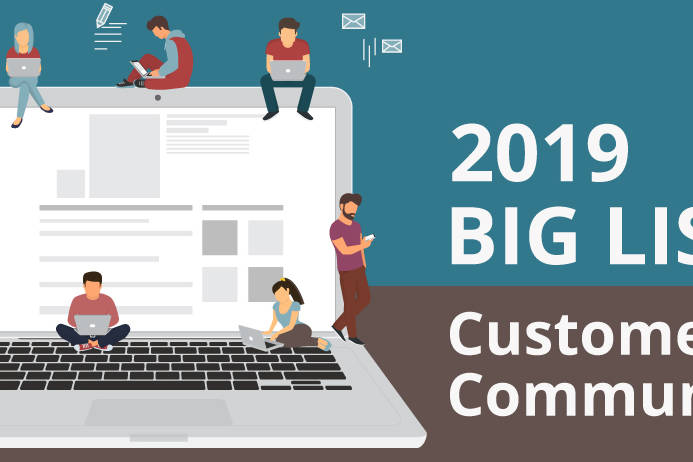For my last (but certainly not least) guest blogger in the summer series, I have invited Dr. Patrica Fletcher to share her thoughts about the impact of social on transformation, power and influence. Patti is a real powerhouse herself – she is the global leader of the Cross-Portfolio Marketing and Social Marketing Center of Excellence teams at IHS, and is the Co-Founder and CEO of PSDNetwork, LLC. Her work centers on enablement and culture change with a particularly interesting focus on women in the boardroom. I am inspired by Patti and her work and am sure you will be too! Read on….
Guest blog post by Dr. Patricia Fletcher
For well over a decade I have lived a double-life, one with a single common theme: transformation, power, and influence.
My day job as an organizational change and B2B marketing executive fuels my passion for pioneering enterprise-wide transformation. My focus is engaging all colleagues on orchestrating conversations with customers, partners, industry influencers — and each other — on key topics. My latest endeavor is a dream role: designing and leading a socially-enabled enterprise almost from the ground up. There is so much movement in the social world. The competitive landscape is always shifting. B2B use of social is quickly becoming an expectation. A recent report indicates 1/3 of the world is online. With so many conversations — so much noise – how do we engage our stakeholders in a context that makes sense?
While my day job enables organizational transformation, my nights and weekends are focused on changing the world. It’s soul-feeding work. I sit on the Astia board to increase representation of women in high growth entrepreneurship and boardrooms. I am on the Corporate Board Committee in The Boston Club so that I may help increase the number of women on corporate and non-profit boards at the top organizations in Massachusetts. I lend my voice for keynotes and writing on multiple online outlets, including my own site www.psdnetwork.com.
The biggest obstacle for women who aspire to business or political leadership continues to be equal access to power and money: access to people with the power; access to people with the money. I am a strong believer in working with both men and women to close this gap. It just won’t go away by itself.
How do these two worlds intersect? Quite easily, it turns out. Four trends have emerged that appear repeatedly in both my worlds.
Trend #1: There is no separation between a professional life and a personal life
At their tenth anniversary conference, Facebook announced they intend to become the platform where all other social platforms convene: an online social ecosystem. We are evolving as an online society. Our online personal and professional networks have been developed based on who we know in a particular channel. My LinkedIn contacts are separate from my Twitter followers who are separate from my Facebook friends who are different from the subscribers on my website and the visitors to my company’s website (www.ihs.com). I connect with the people in these individual channels because I know them or of them.
These siloed channels remind me how women are taught to strive for “work-life balance.” If I had a quarter for every senior executive women I have interviewed or worked with who balked at the ridiculous concept of work-life balance, I might not be rich, but I would have a lot of coins to fill parking meters. Women tend to integrate more than separate. We don’t have a work life and a personal life. We have a life! Taking that a step further, many successful female executives and millennial entrepreneurs I speak with all say they do not separate their relationships. “I don’t have work friends and personal friends, I have friends,” says Mark Johnson, former CEO of Zite (acquired by CNN in 2011, spun off to Flipboard in 2014). “When it comes to my friends I have outside of work, I ask myself if I would want to be in business with him or her? And for people I am in business with, I ask myself if I would want to be friends with that colleague.”
Trend #2: It’s not who you know that matters the most, it’s who knows you
I have studied and advocated for women on boards, in the c-suite and in high growth entrepreneurship for well over a decade. Did you know that only 4% – 9% of venture funding goes to female start-up founders and that women still occupy only 12% of board seats and 14% of CEO positions? Why is that? Because funding and senior executive positions tend to be offered to people who are known to the people who have the money and hold the power. Investors introduce and advocate for entrepreneurs and other investors they know. Board seats are filled by referrals. Who you know is still important. But the game changer is who knows you. That is a universal truth for both men and women.
Facebook’s move to be the platform for all other social platforms reminds me of real-life integration, where connections are not siloed, they are integrated. The social network is evolving into a social ecosystem. The most important part of that ecosystem is the ability to influence. In the world of social marketing, who knows you is an important indicator of influence – the kind that matters.
We B2B social marketers want our brands to be first in mind within our target topics. We want to be in the hearts and minds of our customers, industry influencers, our partners. The people who know us are far more important that the people we know. The more people who know us and will advocate for our brands — whether we are present or not — the more our brands become the go-to source for thought leadership, engagement, and eventually business.
Trend #3: Power relationships are built on mutual interests and sharing information, not on frequency of transactions
Women, even powerful women, will most likely tell you that they hate networking. Huh? We just talked about the importance of being known as a key influence differentiator for people and brands. So, how can these women hate networking? Turns out, what they don’t like are those awkward, forced relationships that feel transactional: those dreaded ‘networking’ cocktail parties where business cards are exchanged (never to be seen again) with the one hand that isn’t carrying the cheap chardonnay.
Judy Robinett, author of “How to be a Power Connector,” built her career from the ground up. No Ivy League education. No wealthy or well-known parents. And certainly no shallow business-card exchange networking interactions. She became a c-suite executive in Fortune 500 companies and an investor in high growth businesses when women didn’t hold those roles. How did she get to be the person who other people with money and power would think of? “With an open heart and an open mind,” says Robinett.
Robinett connects with people on what they care about and focuses on how she can help them. And, she works hard at her relationships. “I am not going to be a one-hit wonder. I am not going to do you a favor and never hear from me again,” says Robinett. She works hard at cultivating her relationships by being the source of information and of new connections. Sound familiar? For us B2B marketers who believe and practice contextual content marketing, it should sound very familiar.
The social marketing landscape has transformed the type of insights we can gain about our customers. We are moving away from old-school advertising categories; the color of my skin, the industry I work in or how old I am no longer determine how I am segmented. Social marketing practices segment on my interests. Yes, my interests!
Online communities have in-depth discussions on birds-of-a-feather topics. Content is created by the brand, but also by customers and partners because each is interested in the topic and has something to contribute to the discussion. This moves away from one-way communications on what the brand cares about to conversations about the role a brand plays as part of a user’s set of interests.
Trend #4: Context and strategy are critical
This one is big. Whether we are talking about building a power network of key players in an industry you are targeting for your next business, or you are trying to engage potential customers online, first you have to find out where they are and then go to them.
Robinett often hears from up-and-coming executives who have tried all her suggestions for building powerful relationships and still come up short. “The problem tends to be that people are doing all the right things, but they aren’t being targeted. They are having the right discussions but they are in the wrong room,” says Robinett. Remembering that powerful, game-changing relationships are built on common interests and sharing information, make sure you are targeting people who share your interests. You will know if they do by knowing how they spend their time, what they talk about, which boards they sit on, what companies they invest in.
It’s not different with online social relationships. Natascha Thomson, owner and founder of Marketing XLerator, says you have to understand who your audience is and where to find them in order to build meaningful relationships via social channels. “In this age of information overload, people have very high expectations and very little attention span. Every time you get in front of a potential customer, you need to personalize your message as much as possible to show this prospect that you understand their pain and have the perfect solution,” says Thomson.
Patti Fletcher is the global leader of the Cross-Portfolio Marketing and Social Marketing Center of Excellence teams at IHS, and is the Co-Founder and CEO of PSDNetwork, LLC. Follow Patti on Twitter @pkfletcher and @pattionmktg. You can read more from Patti on Inc.com here, on PSDNetwork.com here, and on LinkedIn here.
Warning: Attempt to read property "base" on array in /home3/trusten9/public_html/leadernetworks/wp-content/plugins/wp-user-profile-avatar/shortcodes/wp-user-profile-avatar-shortcodes.php on line 665
Warning: Attempt to read property "base" on array in /home3/trusten9/public_html/leadernetworks/wp-content/plugins/wp-user-profile-avatar/shortcodes/wp-user-profile-avatar-shortcodes.php on line 665
Warning: Attempt to read property "base" on array in /home3/trusten9/public_html/leadernetworks/wp-content/plugins/wp-user-profile-avatar/shortcodes/wp-user-profile-avatar-shortcodes.php on line 665
Warning: Attempt to read property "base" on array in /home3/trusten9/public_html/leadernetworks/wp-content/plugins/wp-user-profile-avatar/shortcodes/wp-user-profile-avatar-shortcodes.php on line 665
Vanessa DiMauro
Internationally recognized independent thought leader on social business strategy and operations with a specialty in online community. I help organizations drive top line growth through innovative digital strategy design and thoughtful execution. I have successfully led 60+ strategic social business initiatives for the world's most influential organizations over my 20 years as a social business executive and serve on a number of boards. My award-winning track-record is fueled by passion, experience and research.
My work has been covered by leading publications such as the New York Times, the Wall Street Journal and CIO Magazine and was recently named a Social Marketing Master by Forbes. As a former Executive in Residence at Babson College, Olin School of Management, I am an engaging and informational educator and keynote speaker.
Related Posts
February 8, 2017
The Business Impact of Online Communities: New Study and Framework
Communities generate revenue, save money and advance competitive advantage.…
December 14, 2016
7 Digital Marketing Predictions for 2017
Predictions for digital transformation in 2017



